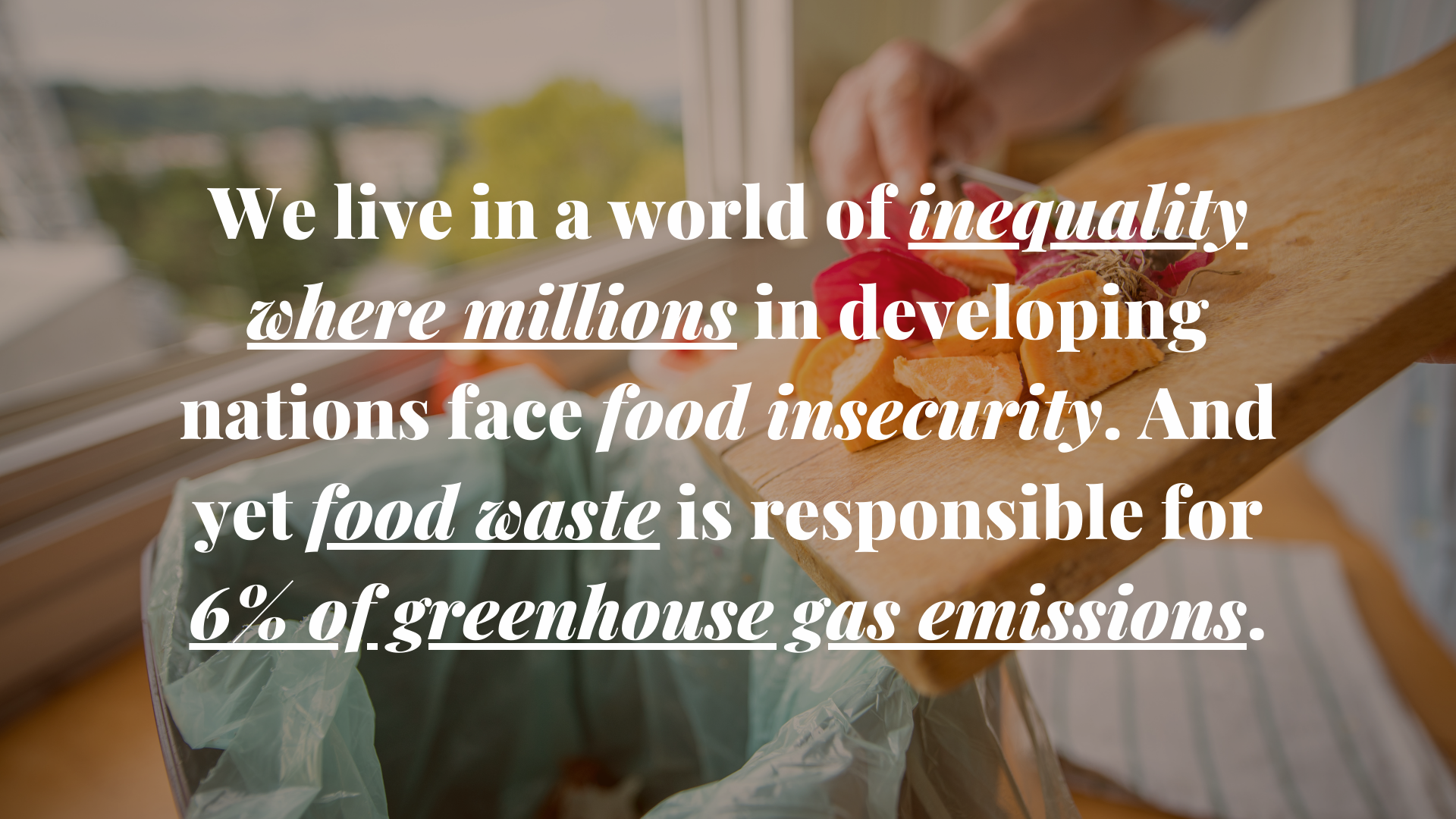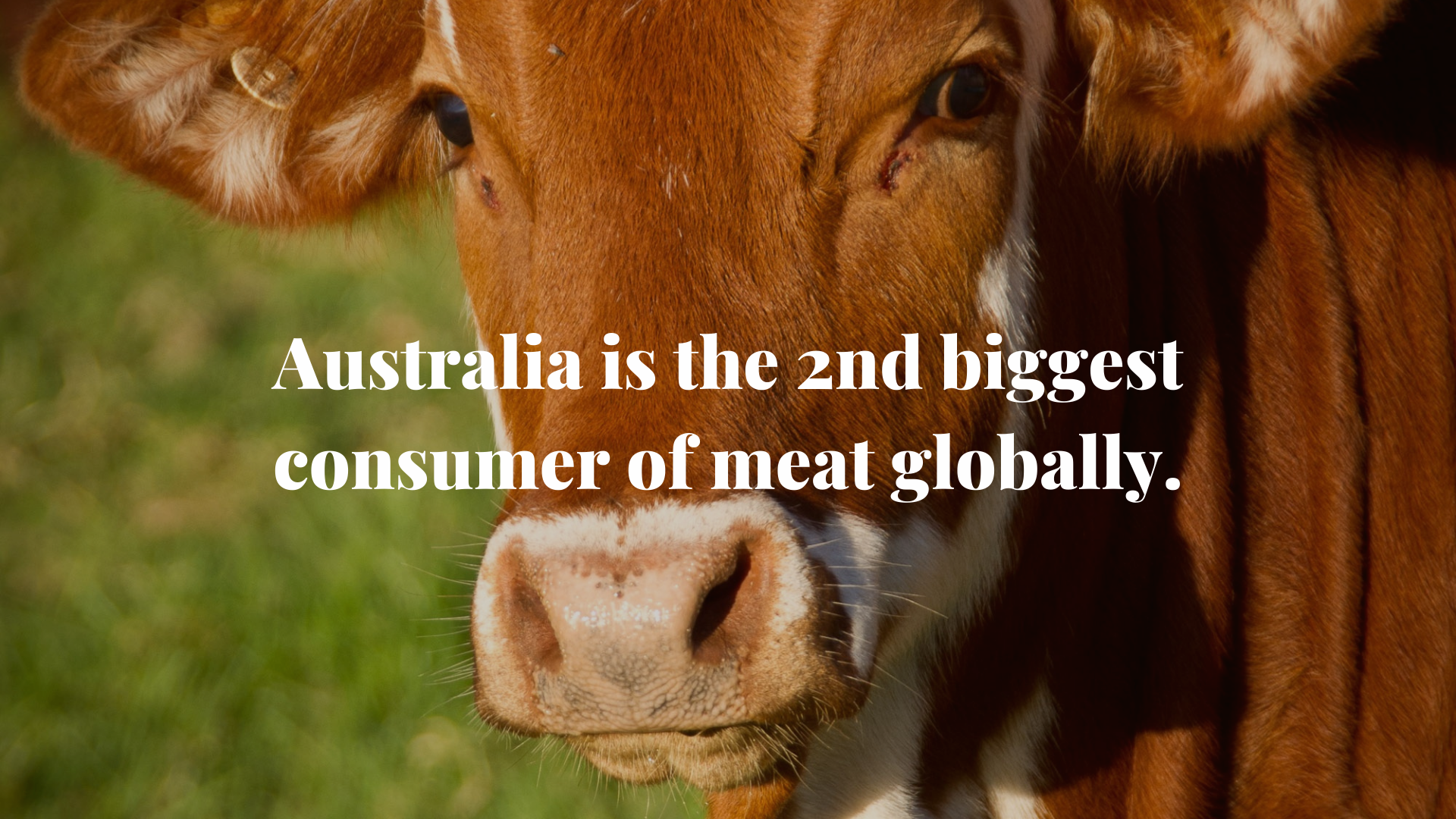Carbon Challenge Week 2: Food & Waste, Carbon & Consumption.

Welcome to Week 2 of the Carbon Challenge.
This week we’ve drawn up a list of super achievable ways to make a difference when it comes to your carbon footprint and takling climate action.
Everything we use as consumers has a carbon footprint, and food and waste is something that we all have in common. If you’re looking to reduce your environmental impact on the planet and improve your wellbeing, then this week’s challenge is for you.
Plus, keep reading as we’ll let you into a little secret about something exciting coming in March - you're literally the first to know!
So, let’s find out where you are on your food and waste journey…

We live in a world of inequality where millions in developing nations face food insecurity. And yet food waste is responsible for 6% of greenhouse gas emissions. If food waste were a country, it would be the 3rd largest emitter.
Methane released by decomposing food waste in landfill contributes 25 times more to global warming that CO2.
The United Nations set a target to halve post retail food waste by 2030 as part of the Sustainability Development Goals (SDG 12.3). Unfortunately, this only represents half of the problem with waste occurring through the whole supply chain. Factors such as climate, mould and pests can contribute to pre-retail loss. Furthermore it is estimated that a disgraceful 40% of produce is wasted due to cosmetic standards set by commercial supermarkets. Produce is rejected due to aesthetic imperfections that do not affect the taste or nutrition.

Food waste is a critical issue not only for the environment, but there are also social and economic implications.
It is reported that there is enough food produced to feed the entire world population. And one third of food produced globally is wasted.
Australia has made a commitment to halve food waste by 2030.
According to FIAL (The Food and Agribusiness Growth Centre) National Food Waste Feasibility study 2021, 7.6 tonnes of food is wasted annually here in Australia, that’s 312kg per capita. Approximately 70% of food wasted is edible. With a cost of $36.5 billion to the Australian economy, that’s $2000-$2500 per household annually.
The water required to produce the food wasted is 2628.3 gigalitres which equated to 286 litres per person, per day and 17.5 million tonnes of CO2 (production, transportation and disposal).

And yet it is reported that in 2019, 1 in 5 Australians experienced food insecurity. This figure increased by 47% in 2020 in light of the economic impact of Covid-19.
Households need to reduce their food waste by a minimum of 30% to meet the SDG target through lifestyle and behavioural changes. Here are some suggestions to achieve this:

- Plan weekly meals and only buy what produce you need.
- Batch prepare and freeze meals.
- Freeze surplus ripe fruit for smoothies.
- Check your fridge temperature is optimum.
- If stored correctly food is often edible beyond the best before dates, trust your judgement.
- Buy local seasonal produce. e.g. from one of our favourite local 100% not-for-profit environmental organisations Santos Organics!
- Always buy fresh produce, not frozen. Find your local farmers market here.
- Grow your own herbs and vegetables: even if you don’t have access to a garden it’s possible to grow in pots, or try sprouting.
- Buy ugly produce.
- Use vegetable scraps for making broth and store in the freezer until you are ready to prepare.
- Utilise not so fresh vegetables for making soup.
- Compost unusable food scraps, or use the green bin provided by the council: find out more about how to compost here.
- Buy direct from the farmer: here are some amazing organisations working directly with farmers:
Storing food correctly will prolong its shelf life, here are some tips and tricks:
- Store potatoes in a cool dark cupboard.
- Remove green tops before storing other root vegetables in the refrigerator.
- If carrots and beetroots become soft try soaking them in chilled water to restore.
- Don’t refrigerate onions and garlic, store in a cool dark cupboard, separate from potatoes.
- Wraps greens and herbs (unwashed) in a clean tea towel before storing in refrigerator.
- Cabbage, cauliflower and broccoli – once cut store in an airtight container in refrigerator.
- Squash and pumpkin can be stored at room temperature (away from fruit): store in refrigerator once cut.
- Store fruit at room temperature until ripe, then store in refrigerator.
- Never store fruit and vegetables together.
- If you have excess produce, try pickling.

Reducing meat consumption is another very powerful way to minimise your emissions.
50% of the earth's habitable land is used as farmland, the vast majority of which is livestock farming. As the global population grows and developing countries aspire to the Western diet, more natural habitats are being destroyed for grazing leading to deforestation, biodiversity loss and drought.
Global meat production accounts for 60% of greenhouse gases from food production. The destruction of forests, growing of grain for feed, methane and transportation all contribute to this. It is estimated that the livestock industry is responsible for 15% of global greenhouse gas emissions.
Australia is the 2nd biggest consumer of meat globally.
We can consume less meat, source local, ethically reared meat from farmers using regenerative practices that help to capture carbon in the soil. Wild meat is another great alternative to factory farmed, particularly invasive introduced species that are damaging native habitat, such as venison where culling programs already exist. Discover the ethical meat suppliers directory here.

It’s not just food waste we need to be mindful of, food packaging and in particular plastic is another serious contributor to emissions from resource extraction, manufacturing, transportation and end of life.
The convenience of single use plastic has become ingrained in our consumerist lifestyles with little thought of the repercussions. Plastic is lightweight, durable and cheap. We are seeing the true cost of this material and the harm to freshwater; terrestrial and marine ecosystems, as well as our health. The characteristics of plastic that have made it so commercially appealing have unfortunately contributed, being lightweight it is easily carried on currents and can travel to remote shores uninhabited by humans. Its durability means that it will take hundreds of years, if not more, to break down slowly degrading into smaller pieces.

Plastic is responsible for 3.8% of greenhouse gas emissions. If plastic were a country it would be the 5th highest emitter globally.
Australians are the worst offenders and consume the most single use plastics. We are responsible for an average of 59kg of plastic waste per person every year.

Here are some tips and tricks to reduce your plastic waste:
- Buy bulk where possible, use your own containers and jars – our team love Santos Organics.
- Buy produce in jars or cans in place of plastic.
- Use reusable bags for shopping, preferably made from natural materials such as cotton, linen or hemp – you can shop some Arnhem options here.
- Use paper or natural cloth bags for storing your produce instead of plastic bags.
- Shop at your local farmers market. Find yours here.
- Use beeswax wraps in place of cellophane to store produce: we still have some Revive Arnhem x Beefolk DIY Wraps left to shop.
- Always have a water bottle, keep cup, reusable take away container, cutlery and reusable straw in your handbag or car: we have plenty of options in Arnhem Home.
- Ditch single-use plastic from your kitchen, laundry & bathroom for a reusable and circular option like Zero Co! Don't miss their tips on lowering your Carbon Footprint here.
It’s not just single use packaging we need to be aware of. Our consumption and disposal of clothing and household items is also contributing to the climate crisis.
- We consume 400% more clothing than two decades ago.
- Australia is the second largest consumer of clothing globally.
- It is estimated that up to 50% of clothing is disposed of within the first year.
🌿 We have something incredibly exciting launching in March to help you close the loop … we will be launching Circulate, a dedicated space to buy and sell pre-owned Arnhem treasures! Stay tuned for more...
E-waste is another critical issue. It is reported that e-waste (electrical items with a plug or battery) increased by 21% from 2014 to 2019, and is predicted to double by 2030. 88% of the 4 million computers and 3 million televisions purchased in Australia end up in landfill. Responsible for 23,000 tonnes of CO2 as well as toxic chemicals that leach into the soil.
Each year 1.5 billion tyres are being discarded worldwide.
These tyres never decompose and are a breeding ground for deadly diseases: dengue, malaria, and zika. 60% of Indonesia’s waste tyres are being collected by factories and burned, releasing toxic gasses into the air and oil into the ground. As a brand born by the beach, we knew we needed to start wearing more sustainable sandals. This is why we started stocking Indosole at our Byron Bay boutique and have a $250 Indosole voucher as part of our Carbon Challenge grand prize!
We must reduce our consumption, reuse, repair and recycle.
In the meantime, get some tips and tricks on how to upcycle your clothing and invest in a Revive Sewing Kit!
As you make these positive changes to reduce your environmental impact, share your experience with your friends and family, and invite them to take the Carbon Challenge too – you’ll get an extra 10 points for sharing the challenge – just log back into your account here to be in with a chance to win more than $6,000 worth of earth loving, life enhancing prizes!